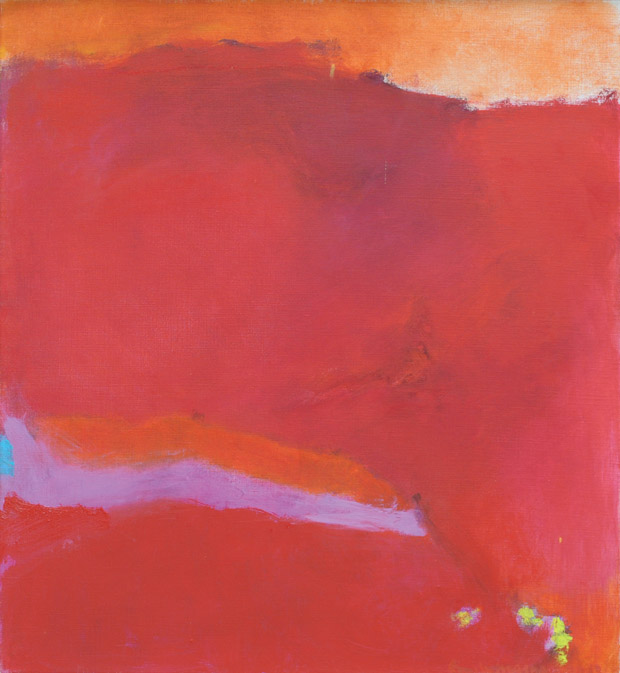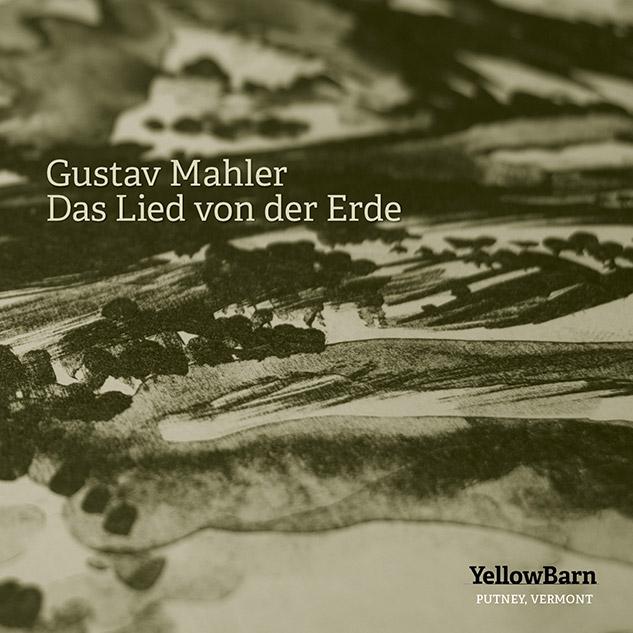On tour with The Sarajevo Haggadah
Yellow Barn is proud to have developed and presented the world premiere performances of The Sarajevo Haggadah: Music of the Book, a new composition by accordionist Merima Ključo with animation by Bart Woodstrup. With funding from the New Jewish Culture Network of the Foundation for Jewish Culture, this new work has embarked on a North American tour. If you, friends, or family members are in one of these cities we encourage you to spread the word.
October 28, 2015
Cleveland, OH
Cleveland Museum of Art
September 4, 2015
Sarajevo, Bosnia-Herzegovina
National Museum of Bosnia and Herzegovina
April 15, 2015
New York, NY
The Morgan Library & Museum
April 13, 2015
Los Angeles, CA
The UCLA Herb Alpert School of Music, Department of Ethnomusicology
January 13, 2015
Chicago, IL
UChicago Arts
November 19 and 20, 2014
Austin, TX
Texas Performing Arts
October 20, 2014
Washington, DC
Jewish Literary Festival
Presented by the Washington DC Jewish Community Center’s
Morris Cafritz Center for the Arts
August 31
Toronto, Canada
Ashkenaz Festival
June 14, 2014
Putney, VT
Yellow Barn
May 22, 2014
San Francisco, CA
The Contemporary Jewish Museum
Co-presented by The Contemporary Jewish Museum and the JCC of San Francisco
April 4, 2014
Dallas, TX
Nasher Sculpture Center
March 26, 2014
Watertown, MA
Arsenal Center for the Arts
Co-presented by the Boston Jewish Music Festival
and the New Center for Arts and Culture
March 20 - 22, 2014
Putney, VT
Yellow Barn
WORLD PREMIERE
The Sarajevo Haggadah: Music of the Book trailer
Video artist Bart Woodstrup, previously at Yellow Barn for the Crumb Madrigals Project, returns to Putney to collaborate with composer/accordionist Merima Ključo and pianist Seth Knopp on the creation of The Sarajevo Haggadah: Music of the Book. The following trailer introduces their work in advance of the world premiere performances on March 20th and 22nd at Sandglass Theater in Putney.
Trio Cleonice shares their syllabus
With guidance from Thomas Hodge, Professor of Russian at Wellesley College, Trio Cleonice developed an ambitious curriculum in preparation for their upcoming Artist Residency, The Russian Soul—The Russian Voice, taking place this May and culminating with a performance of Tchaikovsky and Shostakovich on May 10th at Next Stage in Putney, VT.
On May 4th at 7pm at the Putney Public Library Professor Hodge will introduce their project, which aims to draw connections between Russian literature and language and Russian music. We invite you to explore these works along with the Trio, and then bring your curiosity on May 4th, wherever you are in your journey.
Related reading for Tchaikovsky's Piano Trio in A Minor, Op. 50
Leo Tolstoy, War and Peace. (Vintage Classics), translated by Richard Pevear and Larissa Volokhonsky.
Leo Tolstoy, The Death of Ivan Il’ich and “Master and Man,” in Tolstoy’s Short Fiction, 2nd edn. (Norton Critical Edition), translated by Michael Katz
Selected elegiac poetry by Afanasii Fet
Related reading for Shostakovich's Piano Trio No. 2 in E Minor, Op. 67
Mikhail Zoshchenko, Nervous People and Other Satires and Berfore Sunrise (excerpts)
William Shakespeare, Sonnet No. 66, translated by Boris Pasternak.
Anton Chekhov, “Rothschild’s Violin” in Anton Chekhov’s Short Stories (Norton Critical Edition).
Yellow Barn's 2014 Summer Artwork

Emily Mason, Somewhere in Silence, 2013, 24×22", oil on canvas
I go to a blank canvas with a blank mind. I want to play with colors. I want to get a conversation going between and among the colors on the canvas. That is, I'll put one color down and then a second, and the second affects the first. I'll put an orange down, for example, next to a purple, and it will be too hot, so I'll cool it down. I look to see what the paint will do, how it will affect me and how it will change.
I want to avoid the static. I sometimes will be developing a painting and get stuck, so I'll turn it on its side or upside down just to get me unstuck. That's how you learn, by exploring, by staying unstuck.
—Emily Mason
Emily Mason (b. 1932), her mother Alice Trumbull Mason (1904-1971), and her daughter Cecily Kahn embody three generations of abstract painters, all based in New York City. She studied art at Bennington College in Vermont and subsequently at Cooper Union. She married artist Wolf Kahn in 1957. As a young artist in New York City in the 1950s she met and was influenced by many of the great artists of the day: Ilya Bolotowsky, Piet Mondrian, Jackson Pollock, and Willem de Kooning, to name a few. Mason has had numerous exhibitions of her work since her first one-person exhibition at New York's Area Gallery in 1960. In 1979 she was awarded the Ranger Fund Purchase Prize by the National Academy. She has taught painting at Hunter College for more than 25 years, and her work is included in numerous public and private collections. She lives with her husband in New York City and has a home in Vermont.
Yellow Barn CDs: Das Lied von der Erde

In 2012 Yellow Barn’s summer season culminated with a performance of Gustav Mahler’s Das Lied von der Erde, arranged for chamber ensemble by Arnold Schoenberg, completed by Rainer Riehn.
Benjamin Butterfield, tenor
William Sharp, baritone
Ray Furuta, flute
Mark Hill, oboe and English horn
Elinor Rufeizen, clarinet
Steven Dibner, bassoon
Stephen Stirling, French horn
Violaine Melançon, violin
Grace Park, violin
Roger Tapping, viola
Sunny Yang, cello
Samuel Suggs, double bass
Qing Jiang, piano
Seth Knopp, harmonium and celeste
Levy Lorenzo, percussion
Eduardo Leandro, percussion
Recorded August 4-5, 2012, at The Big Barn, Putney, VT
Produced and engineered by Judith Sherman;
Engineering and editing assistant: Jeanne Velonis
Price: $15
To purchase, call Yellow Barn at (802) 387-6637, or send an email to info@yellowbarn.org.
Download a PDF of the CD booklet
Translation copyright © by Emily Ezust, from The Lied, Art Song, and Choral Texts Archive
Cover image: Ren Adams
Soundings and silences: A JFK tribute in Dallas
Evan Mitchell writes for Bachtrack:
This weekend, the Dallas Symphony Orchestra marked the 50th anniversary of the assassination, barely a mile from the present-day Arts District, of US President John Fitzgerald Kennedy. Their program included Beethoven’s Eroica Symphony, an obvious choice, as well as the Sibelius Violin Concerto. Just across Flora Street in City Performance Hall, however, a very different memorial concert unfolded Saturday evening. Soundings, the series that presents biannual concerts at the Nasher Sculpture Center, put on a program of words and music in which silence spoke volumes.
After the four musicians who were to perform Messiaen’s Quatuor pour la fin du temps (“Quartet for the End of Time”) took their seats on stage, a recording was played of Jorge Luis Borges’ poem In Memoriam, J.F.K., an indirect eulogy that recounts a host of assassinations throughout history. As the Messiaen unfolded, we heard interspersed between its movements: wordless sounds recorded at JFK’s funeral; clips from several of the President’s speeches; and his brother Robert F. Kennedy speaking after the killing of Martin Luther King, Jr. (Robert, too, would be felled by an assassin’s bullet within months of his speaking those words). In addition to setting the atmosphere, this device had the practical effect of breaking up the nearly hour-long Messiaen quartet, which even its enthusiasts would likely concede is not easy listening.
The Messiaen did indeed seem to defy time. More fluid passages seemed to float, and slow movements – Messiaen gives the description “inexorably slow” for Louange à l’Éternité de Jésus(“Praise to the Eternity of Jesus”) – were trancelike. Mr Neidich’s complete technical and emotional command in Abîme des oiseaux (“Abyss of the Birds”) was so transcendent that even such virtuosity couldn’t remind me I was merely at a concert on a Saturday night. His performance was matched in intensity and subtlety by that of his colleagues – violinist Mark Steinberg and cellist Nina Lee of the Brentano String Quartet, and Seth Knopp, pianist and Artistic Director of Soundings.
Intermission cleared the air before the emotional center of the concert, which by design did not feature the playing of a single note. The recording of newsman Walter Cronkite announcing on air JFK’s death was followed by several short clips in which others shared their personal recollections of that day. All the while, the Brentanos sat in pairs to either side of the hall, with four empty chairs on stage. The first half having circumscribed the assassination, this emptiness for the first time illustrated the void of death. After the recordings were finished, the quartet performed John Cage’s 4’33”, a piece notorious for consisting solely of silence. A minute or two apart, the musicians walked slowly, one by one, onto the stage. The power of silence, of the ritualized nothingness Cage envisioned, was strong.
Performed in a typical concert, 4’33” is more likely to raise questions than to hint at their answers, but in the context of a memorial it became an exercise in collective grieving. Cronkite’s words, bullet-like, pierced the already elegiac atmosphere, and the silence that followed was almost unbearable. The silence of 4’33” became the void we have all felt in expecting to hear the voice of a loved one, and realizing this voice – the impression made on the world by that person in sound, their music – is gone. This performance of 4’33” went beyond the token respectfulness of a moment of silence; its quiet minutes perfectly simulated that moment when what has been lost becomes palpable.
One final recording of JFK’s voice broke the silence, and his words were followed by the Brentano Quartet playing Steven Mackey’s One Red Rose, a new work jointly commissioned by Carnegie Hall, Yellow Barn (the summer festival curated by Mr Knopp), and the Nasher Sculpture Center. In a program note, Mackey described his feelings of admiration at that time for the newly widowed Jackie Kennedy. He sought to convey in this work a sense of the dialogue between opposites – personal and public, and chaos and control. This manifests itself in several ways: the uncertain, shape-shifting ostinatos of the first movement, “Five Short Studies”; the threat of structure dissolving into chaos in “Fugue and Fantasy”, the second movement; and the third movement, titled “Anthem and Aria” – Mackey’s respective terms for the public stoicism masking Jackie’s inner song of mourning. One Red Rose ends with a transcendence of sorts, an ascending and increasingly consonant effusion by the violins, whose Coplandesque sonorities blaze over an open-fifth drone in the lower strings.
Selections from this concert were performed the next day in an event at the Sixth Floor Museum, the room from which Lee Harvey Oswald fired his three shots. As haunting as the Cage and indeed the entire experience had been in City Performance Hall, I can only imagine the effect it had in this far eerier setting.
